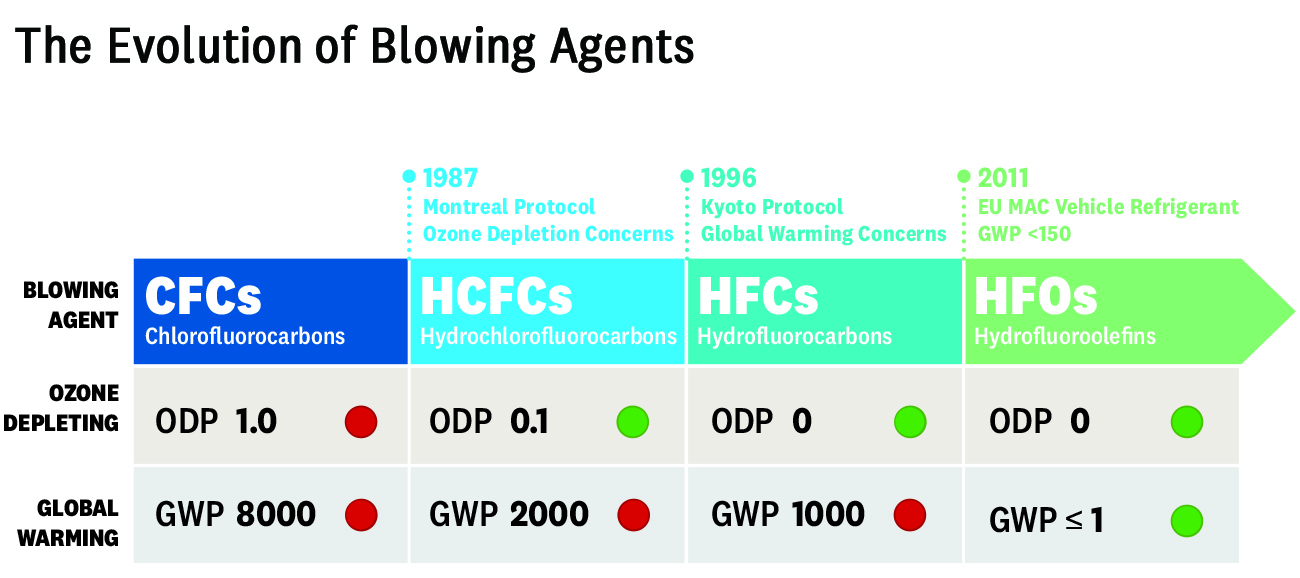The Sustainable Benefits of Spray Foam Insulation
November 22, 2022

Spray foam insulation, or spray polyurethane foam (SPF), is a viable and sustainable insulation for homes and commercial buildings. Several advances have made it the ‘green solution’ of choice for many architectural designers, builders and homeowners.
Some factors include:
- Blowing agents
- Recycling of plastic bottle waste
- Shipping efficiencies
The Spray Foam Advantage
Spray foam does more than just insulate. It also provides an air barrier to prevent air leakage and a vapour barrier in one step. The sustainable benefits begin with the fact that it is a one step continuous application. There’s no need for a separate air or vapour barrier, as would be the case with other types of insulation like fibreglass. Additional layers, such as vapour barriers, have a significant overall impact on the carbon footprint due to their asphaltic, or polyethylene-based composition
SPF insulation expands into crevices and blocks air infiltration. This allows a home or building’s A/C equipment to run more efficiently. A more efficient HVAC system will result in significant savings to energy bills each month, and help to reduce greenhouse gases.
Low Global Warming Potential (GWP)
Blowing agents are gases needed to expand the foam to its rigid shape. Within the gases, tiny bubbles form to act as insulators. Both XPS rigid panels and spray foam insulation contain blowing agents. Spray foams developed in the 1980s used Chlorofluorocarbons (CFCs). CFCs harm the ozone layer and contribute extensively to Global Warming Potential (GWP). HFCs, banned in 1996, had a shocking GWP of 4,000.
Today, we use Hydrofluorocarbons (HFOs)^ as the blowing agent in all our closed-cell foam products. Elastochem was the first to develop a CCMC listed HFO foam in Canada with Insulthane®Extreme. Mandated throughout Canada, HFO provides a GWP of 1. Our open-cell (low-density) SPF is water-blown with a GWP of 0.
Recycled Plastic Bottles
Plastic bottle waste drastically impacts our environment contributing to ocean pollution and greenhouse gas emissions. Elastochem is proud to use recycled plastic bottles in our closed-cell Insulthane Extreme insulation. Each year, we have prevented over 200 million plastic bottles from ending up in landfills and contributing to the pollution of our planet.
Shipping Efficiency Reduces Environmental Impact
When evaluating the sustainability of spray foam insulation, you should also consider the environmental consequences of transportation. For commercial projects, the consumption of petroleum needed to transport products, such as mineral wool (boardstock) can be intensive on the environment and costly. Add to this the wear and tear on delivery vehicles and more delivery vehicles on the road, which causes noise pollution, traffic slowdowns and other problems.
Compared to other types of insulation, spray foam reduces bulk transportation weight, packaging and waste such as cuttings from fiberglass that end up in landfills.
GREENGUARD Gold Certified
We produce open and closed-cell spray foams that are GREENGUARD and GREENGUARD Gold certified. GREENGUARD certification ensures that the insulations are scientifically proven to meet some of the world’s most rigorous third-party chemical emissions standards.
To learn more about the sustainable benefits of spray foam insulation, contact our building science team.
^ In Canada
